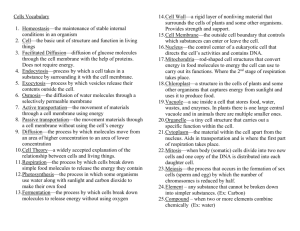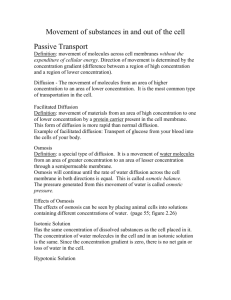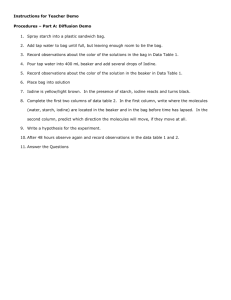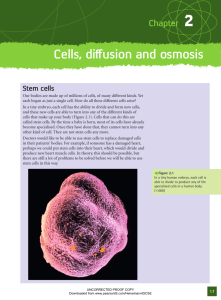Diffusion and Osmosis Guided Notes
advertisement
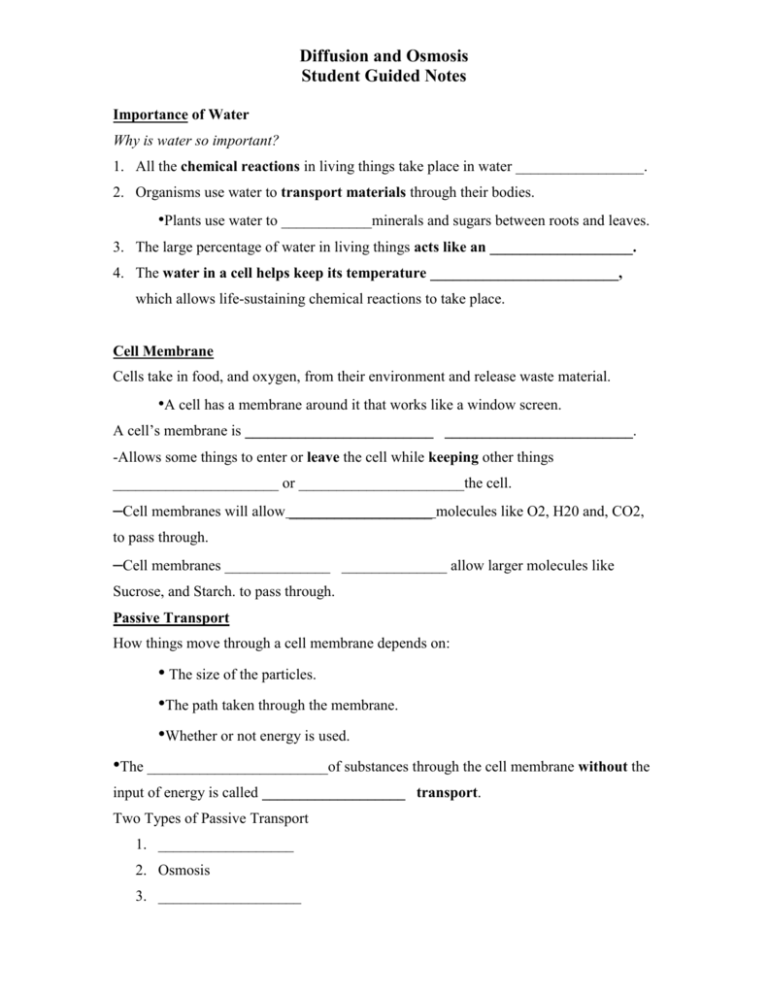
Diffusion and Osmosis Student Guided Notes Importance of Water Why is water so important? 1. All the chemical reactions in living things take place in water _________________. 2. Organisms use water to transport materials through their bodies. •Plants use water to ____________minerals and sugars between roots and leaves. 3. The large percentage of water in living things acts like an ___________________. 4. The water in a cell helps keep its temperature _________________________, which allows life-sustaining chemical reactions to take place. Cell Membrane Cells take in food, and oxygen, from their environment and release waste material. •A cell has a membrane around it that works like a window screen. A cell’s membrane is _________________________ _________________________. -Allows some things to enter or leave the cell while keeping other things ______________________ or ______________________the cell. –Cell membranes will allow ___________________ molecules like O2, H20 and, CO2, to pass through. –Cell membranes ______________ ______________ allow larger molecules like Sucrose, and Starch. to pass through. Passive Transport How things move through a cell membrane depends on: • The size of the particles. •The path taken through the membrane. •Whether or not energy is used. •The ________________________of substances through the cell membrane without the input of energy is called ___________________ transport. Two Types of Passive Transport 1. __________________ 2. Osmosis 3. ___________________ 1. Diffusion Molecules in solids, liquids, and gases move constantly. •This random movement of molecules from one area, where there are more of them into another area, where there are fewer of them is called ______________________ •Example: Food Coloring and Water Equilibrium •Molecules of a substance will continue to move from area into another until the number of these molecules is ____________________ in the two areas. • When this occurs, equilibrium is reached and diffusion stops. 2. Osmosis Water molecules move by diffusion _____________and ________________of cells. Osmosis is the passage of water from a region of high water concentration _____________________ a semi-permeable membrane to a region of low water concentration. •If the area surrounding the cell has a lower concentration of water molecules than inside the cell, the cell will lose water by ____________________. •If the area surrounding the cell has a higher concentration of water molecules than inside the cell, the cell will gain water by ____________________. Example:Carrots Why do carrots in salt water become limp? •When there is a lower concentration of water molecules surrounding the carrot cells, water is lost from inside the cells. The cell membrane comes away from its _________________ _________________. •The loss of water reduces pressure against the cell wall, and carrot cell becomes ___________________. Why do carrots stay crisp in pure water? •When there is a higher concentration of water surrounding the carrot cells than inside the cell, water moves into the cells. •The cells would ________________ with water. •Their cell membranes press against their cell walls. •Pressure _____________________ and the cells become firm. Re-Cap Diffusion is the movement of molecules from one area where there is more of them into another area where there is fewer of them. Osmosis is the passage of water from a region of high water concentration through a semi-permeable membrane to a region of low water concentration.



